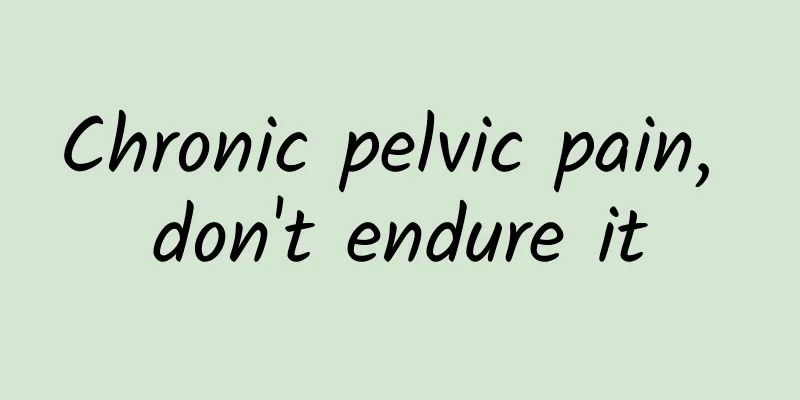How much do you know about hemangioma? This article will tell you about its types, hazards and treatment

|
Author: Shen Gang, Chief Physician, Children's Hospital, Capital Institute of Pediatrics Reviewer: Liu Li, Chief Physician, Beijing Children's Hospital, Capital Medical University There are many types of hemangiomas, and their hazards should not be underestimated. From being merely a local aesthetic problem to potentially life-threatening, they may become a "stumbling block" on our road to health. The classification of hemangiomas is based on multiple dimensions, including the site of occurrence, growth rate, and regression characteristics. Among them, infantile hemangioma is the most common type, accounting for more than 95% of hemangioma cases, and exhibits specific growth and regression patterns. In addition, hemangiomas also include rapidly regressing, non-regressing, partially regressing, growing, and other special types, such as granulomatous hemangioma, Kaposi's hemangioendothelioma, plexiform hemangioma, epithelioid hemangioendothelioma, etc. Different types of hemangiomas differ in clinical manifestations, treatment methods, and prognosis. Figure 1 Original copyright image, no permission to reprint The degree of harm caused by hemangiomas varies depending on their type, size, and location. Some hemangiomas may only be a local aesthetic problem, while others may cause serious complications. For example, some special types of hemangiomas, such as Kaposi's hemangioendothelioma, may affect the blood system and cause a decrease in platelets, which is life-threatening. In addition, although large hemangiomas usually do not cause bleeding, some small and fragile hemangiomas, such as granulomatous hemangiomas, may bleed a lot and require special vigilance. Therefore, timely detection and correct treatment of hemangiomas are crucial. Figure 2 Original copyright image, no permission to reprint In the treatment of hemangiomas, a comprehensive and meticulous strategy is adopted, which requires accurate assessment of the condition and rational selection of treatment methods. The Hemangioma Department of Capital Institute of Pediatrics has a series of multi-dimensional treatment plans, aiming to provide the most appropriate intervention measures for different hemangioma types and disease characteristics. For large, superficial hemangiomas that are suitable for physical therapy, bandage compression is an effective option. It achieves the goal of treatment by applying physical pressure to shrink the tumor. For small hemangiomas, sclerotherapy injection becomes the preferred choice. The sclerotherapy can occlude the blood vessels inside the hemangioma, and eventually cause the tumor to regress. For larger hemangiomas that are relatively flat and stable, laser therapy becomes a sharp sword in the treatment arsenal. Through precise laser irradiation, the blood vessels in the tumor are destroyed, accelerating its regression process. Drug therapy, especially the use of propranolol, has become the mainstream method for treating infantile hemangiomas, especially those with medium and high risk. As a first-line drug, propranolol has shown excellent effects in controlling the growth of hemangiomas. For hemangiomas that are not sufficiently responsive to propranolol, the therapeutic potential of other drugs can be explored. Interventional therapy, as a treatment method with high technical content, injects embolic agents into the blood supply artery of the hemangioma to block the blood supply to the tumor, causing the hemangioma to gradually shrink due to ischemia. It is suitable for situations where drug treatment is ineffective. For hemangiomas that are complex, large in size, difficult to respond to drug treatment, and not suitable for interventional treatment, surgical resection becomes a decisive solution, especially for specific types such as plexiform hemangioma, Kaposi's hemangioendothelioma, keratinizing hemangioma, etc., surgery can completely remove the tumor. For some congenital involuting hemangiomas, since they tend to regress naturally, observation and follow-up can be adopted to give the tumor sufficient time to regress on its own, and intervention is only performed when necessary. Depending on the specific risk classification of hemangiomas - high risk, medium risk, and low risk, the choice of treatment options will vary depending on their location, size, number, growth rate, and whether they affect body functions. For high-risk and medium-risk hemangiomas, drug therapy, especially the use of propranolol, becomes the first choice. For low-risk hemangiomas, injection sclerosing agents or topical medications, such as specific eye drops, are preferred. For larger hemangiomas that are not well responded to drug treatment, interventional treatment becomes the preferred alternative. |
>>: New painkiller could benefit millions of patients without risk of addiction
Recommend
How big is the breast fibroid that requires surgery?
Normally, if the breast fibroid is smaller than 3...
Fetal movement is like bubbling, which is caused by lack of oxygen
Many mothers think of their pregnancy and miss th...
Can I sleep with my partner two days before my period?
Menstruation is a physiological characteristic of...
47-year-old adenomyosis menopausal symptoms
Speaking of adenomyosis, I believe everyone is fa...
Drinking is harmful to your health. Here are 3 signs that you need to put down your glass and stop "self-harming"
Since the advent of alcohol, human beings have al...
Why do I always burp during pregnancy?
Many people always have hiccups when they are pre...
[Medical Q&A] Why are children with autism called “star children”?
Planner: Chinese Medical Association Reviewer: Wa...
Is giving birth at 36 weeks considered premature?
It is very worthy of joy for women to give birth ...
5 months pregnant lower abdomen pain like needles
It is very normal for every pregnant woman to exp...
What are the factors that cause irregular menstruation in middle-aged women?
Menstrual abnormalities in women are an issue we ...
Will I have premature birth if I have a grade 1 placenta at 27 weeks?
When it comes to the late stage of pregnancy, you...
Can pregnant women take cold capsules?
Many female friends are prone to catching colds d...
What are the side effects of taking painkillers for dysmenorrhea?
Dysmenorrhea is a problem that many women will en...
Is it normal for the fetal movement to decrease in late pregnancy?
In life, many pregnant women will find that the a...
What is the best time for painless abortion and what are the precautions?
The reason for the problem of how many months is ...









